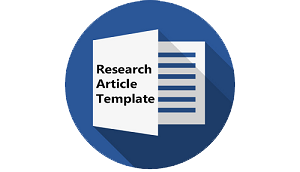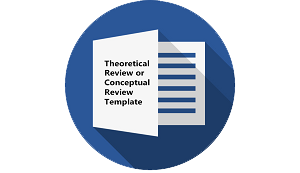PEMBELAJARAN MENULIS ESAI DALAM DISERTASI: KAJIAN METAKOGNITIF
DOI:
https://doi.org/10.30957/cendekia.v12i2.535Keywords:
writing aspect, metacognitive, assessment, experiment.Abstract
Â
Â
Four dissertations on writing subject are analyzed in this study implementing metacognitive analyses.  The analysis focused on the overall aspects of how research procedures are employed and how the findings of those dissertations are modified for the purpose of a new research on similar concerns. The study reveals that prospective research topics in writing are available. Both approaches and topics of writing are offered from which research designs vary. Quantitative approaches using experimental study may be focused on the testing of teaching methods in writing, writing strategies, the writing process, and techniques of writing. Rhetoric and linguistics aspects of writing are topics from which researchers can develop with various objectives. Specifically, assessment on writing is a prospective field that is recently required in relation to the performance assessment. In addition, developing teaching materials on the writing of which Research and Development (R&D) design is applicable is also demanding.
Â
Â
Downloads
References
Ary, D. Jacobs, L.C. and Razavieh, A. 1985. Introduction to Research in Education. New York: Rinehart and Winston Inc.
Berg, B.L. 1989. Qualitative Research Methods for the Social Sciences. London:
Allyn and Bacon, Co.
Bogdan, R and Sari K.B. 1992. Qualitative Research for Education. Needham
Heights: A Division of Simon & Schuster Inc.
Brown, G. and Yule, G. 1981. Discourse Analysis. Cambridge: Cambridge
University Press.
Budiharso, T. 2008. Contrastive Analysis on Rhetoric and Linguistic Features of
Academic Essays. Yogyakarta: Penerbit Cawanmas.
Budiharso, T. 2006a. The Rhetoric Features of English and Indonesian Essays
Made by EFL Undergraduate Students. TEFLIN Journal, 17(2):54-86.
Budiharso, T. 2006b. The Linguistic Features of English and Indonesian Essays
Made by EFL Undergraduate Students. Bahasa dan Seni, Jurnal Bahasa, sastra, dan Pengajarannya, 34(1):1-18.
Budiharso, T. 2006c. Rhetoric and Linguistic Features: A Contrastive Rhetoric
Analysis of Essay Writing. Yogyakarta: Steppapublishing.
Budiharso, T. 2001. Rhetoric and the Linguistic Features of English and
Indonesian Essays by EFL Undergraduate Students. Unpublished Doctoraal Dissertation. Malang: State University of Malang.
Carson, J.E, Carrell, P.L. Silberstein, S., Kroll, B, and Kuehn, P.A. 1990. Reading-
Writing Relationships in First and Second Language. TESOL QUARTERLY, 24(2):245-266.
Caudery, T. 1995. The Process Approach: Seminar Notes. Paper Presented in
the British Council Summer School on Writing in the Classroom. Guildford: University of Surrey.
Connor, U. 1996. Contrastive Rhetoric: Cross-Cultural Aspects of Second
Language Writing. Cambridge: Cambridge University Press.
Connor, U and J. Lauer. 1988. Cross-Cultural Variation in Persuasive Student
Writing. In Writing Across Languages and Cultures. pp. 138-159. Newbury Park, CA: Sage Publication.
Fraenkel, J.R., and Wallen N.E. 1990. How to Design and Evaluate Research in
Education. New York: McGraw-Hill Inc.
Harjanto, I. 1991. The Effect of Sentence Combining Practice on Students
Writing Ability in Terms of Language Use. Unpublished Master’s Thesis. Malang: IKIP MALANG.
Harjanto, I. 1999. English Academic Writing Features by Indonesian Learners of
English. Unpublished Doctoral Dissertation. Malang: IKIP MALANG.
Hartfiel, V.F., Hughey, J.B., Wormuth, D.R. Jacobs, H.L. 1985. Learning ESL
Composition: English Composition Program. London: Newbury House Publishers, Inc.
Holsti, O.R. 1969. Content Analysis for Social Sciences and Humanities. Donn
Mills, Ontario: Addison-Wesley Publishing.
Kaplan, R.B. 1980. Cultural Thought Patterns in Intercultural Education. In Croft
(ed.) 1980. Readings on English as a Second Language for Teachers and Teacher Trainees. Boston: Little Brown and Co. pp. 399-418.
Krashen, S.D. 1981. Writing: Research, Theory, and Applications. Oxford:
Pergamon Institute of English.
Krippendorff, K. 1980. Content Analysis: An Introduction to Its Methodology.
London: Sage Publications.
Langan, J. 1986. College Writing Skills with Readings. London: McGraw-Hill
Company.
Latief, M.A. 1990. Assessment of English Writing Skills for Students of English as
a Second Language at IKIP MALANG Indonesia. Unpublished Ph.D. Dissertation. Iowa City, Iowa: The University of Iowa.
Miles M and M. Huberman. 1994. Qualitative Data Analysis: An Expanded
Sourcesbook. Beverly Hills: SAGE Publication Inc.
Mukminatien, N. 1997. The Differences of Students’ Writing Achievement Across
Different Course Levels. Unpublished Doctoral Dissertation. Malang: IKIP MALANG.
Newman, I and Benz, C.R. 1998. Qualitative-Quantitative Research Methodology:
Exploring the Interactive Continuum. Austin, Texas: Southern Illinois University Press.
Oshima, A. and Houge, A. 1991. Writing Academic English: A Writing and
Sentence Structure Handbook. Second Edition. Cambridge: Addison-Wesley Publishing Company.
Solikhah, Imroatus. 2016. Refleksi dan Implikasi Penelitian Disertasi Doktor dan
Menulis untuk Jurnal Internasional. Cendekia, 10(2):255-268.
Wahab, A. 1995. Indonesian Rhetoric in Intercultural Communication. The
TEFLIN Silver Anniversary Seminar. Yogyakarta: IKIP Yogyakarta, Gajah Mada University, Sanata Dharma University, August, 2-5.
Downloads
Published
How to Cite
Issue
Section
License
Authors who publish with this journal agree to the following terms:
- Authors retain copyright and grant the journal right of first publication with the work simultaneously licensed under a Creative Commons Attribution-ShareAlike 4.0 International License that allows others to share the work with an acknowledgement of the work's authorship and initial publication in this journal.
- Authors are able to enter into separate, additional contractual arrangements for the non-exclusive distribution of the journal's published version of the work (e.g., post it to an institutional repository or publish it in a book), with an acknowledgement of its initial publication in this journal.
- Authors are permitted and encouraged to post their work online (e.g., in institutional repositories or on their website) prior to and during the submission process, as it can lead to productive exchanges, as well as earlier and greater citation of published work (See The Effect of Open Access).












